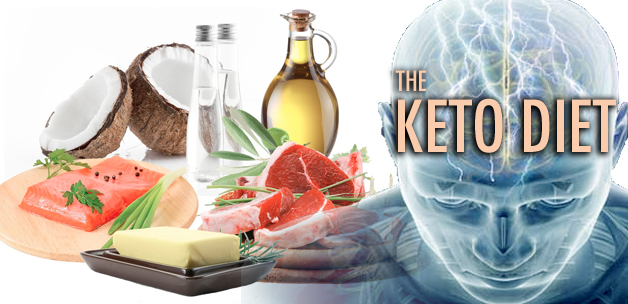
What is the ketogenic diet?
A “typical” ketogenic diet consists of at least 70 percent of calories derived from fat, less than 10 percent from carbs and less than 20 percent from protein. The ketogenic diet, long used to treat epilepsy in children, calls for 90 percent of daily calories to come from fat, with the amount of protein or carbs varying as long as it’s 4 grams of fat for every combined 1 gram of carb and protein, according to the American Epilepsy Society. That can mean chowing down on a lot of cheese, butter, eggs, nuts, salmon, bacon, olive oil and non-starchy vegetables such as broccoli, cauliflower, greens and spinach. For the arithmetic-challenged, apps and online programs can do the math for you. (No matter what, the keto diet is vastly different than the USDA dietary recommendations of 45 to 65 percent of one’s total calories to be carbohydrates, 20 to 35 percent from fat and 10 to 35 percent from protein.)
The goal of the ketogenic diet is to enter a state of ketosis through fat metabolism. In a ketogenic state, the body uses primarily fat for energy instead of carbohydrates; with low levels of carbohydrate, fats can be converted into ketones to fuel the body.
The physical version of the Essential Keto Cookbook with 100+ Keto recipes including breakfast, appetizers, entrees, desserts, drinks, and snacks. Net-carb, fat, protein, and calorie count for every recipe. Enjoy recipes like Creamy Breakfast Porridge, Fiery Buffalo Wings, Mini Burgers, Jalapeño Corn Bread, Fish Tacos, Popcorn Shrimp, and tons more.
Can I lose weight on the keto diet?
Yes. Certainly in the short-term, it appears that way. For the first two to six months, there’s evidence that a very low-carbohydrate diet can help you lose more weight than the standard high-carbohydrate, low-fat diet, according to a new literature review of low-carb diets by the National Lipid Association.
“By 12 months, that advantage is essentially gone,” said Carol F. Kirkpatrick, director of Idaho State University’s Wellness Center, and lead author of the new literature review.
After that, weight loss seems to equalize between those two popular diet regimens. She said keto was best used to kick-start a diet, before transitioning to a carb intake that you can adhere to for the longer term.

Advice we can all agree on: Eat healthily. There is no quick fix.
Advice from the battling diet camps can be confusing. But Dr. Hall of the National Institutes of Health said there is a middle ground: “Can we get beyond this low-fat, low-carb diet wars, and look to where people have this common piece of advice?” He said some versions of both the low-fat and keto diets can be healthier than the standard American diet, which is known as SAD for a reason. Low in vegetables and fruit, it’s filled with prepackaged foods with additives, added sugars and unrecognizable ingredients.
Keto isn’t the only way to lose weight or change your life, obviously. Dietitians say it is not essential to cut back on as many foods, since a moderate low-carb diet may still hold benefits for diabetes or weight loss.
One thing is certain: Any meaningful change starts with behavior. Are you at a right point to make a change in your life? Dr. Yancy suggests asking friends and family to support you, confer with a doctor, incorporate physical activity and begin to think of it not as a temporary measure but more of a lifestyle change
For Delicious Breakfast recipes click here

No comments:
Post a Comment